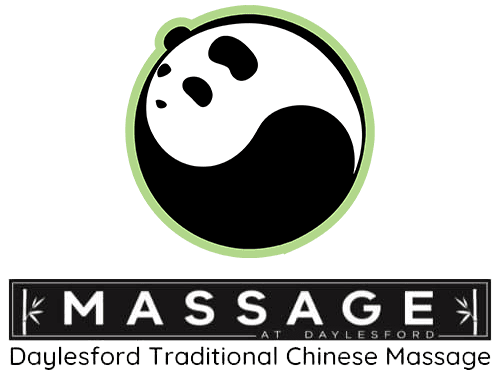What to expect during a deep tissue massage?
A deep tissue massage may be perfect for you if you’re looking for a massage that goes beyond relaxation. This type of massage focuses on realigning the deeper layers of muscle and connective tissue, which can help relieve pain and tension. Here’s what to expect during your appointment.

What is a deep tissue massage, and what are the benefits?
A deep tissue massage is a type of massage that focuses on the deepest layers of muscle and connective tissue. It aims to release the chronic pain patterns that can form in the body, specifically in the muscles that tend to be tight and inflexible. A deep tissue massage benefits anyone who experiences chronic pain, tension headaches, sports injuries, or has a limited range of motion.
The benefits of a deep tissue massage include:
- Reducing chronic pain
- Improving range of motion
- Breaking up scar tissue
- Decreasing muscle tension
- Relieving headaches
- Improving posture
- Reducing stress and anxiety
- Promoting relaxation
- aiding in the rehabilitation of injured muscles
If you are experiencing any of the issues mentioned above, or simply want to improve your overall wellbeing, consider booking a session with a qualified massage therapist. Deep tissue massages can relieve and promote healing in the body, mind, and spirit. Deep tissue massages are a great way to release chronic pain, improve range of motion, and break up scar tissue. There are many benefits to deep tissue massage, including reducing stress and anxiety, promoting relaxation, and aiding in the rehabilitation of injured muscles.
What should you expect during a deep tissue massage appointment?
Deep tissue massages are therapeutic and relaxing, but they are also much more. A deep tissue massage is a type of massage that focuses on the deeper layers of muscle and connective tissue. It addresses specific issues, such as chronic pain, injury rehabilitation, and postural problems.
During a deep tissue massage, your therapist will use slow, deliberate strokes to target the deepest layers of muscle and connective tissue. They will use their hands, forearms, or elbows to apply pressure to these areas. The goal is to release tension and restore balance in the body.
If you are seeking relief from chronic pain or an injury or simply looking for a deeper level of relaxation, a deep tissue massage may be proper for you. Your therapist will discuss your needs and expectations before the appointment begins so that they can tailor the massage accordingly.
Deep tissue massages can be both refreshing and relaxing. They are typically performed over an hour but can be shorter or longer depending on your needs. During the massage, you will likely lie on your side or in a semi-reclined position; these supported poses keep you and the baby comfortable and free from strain or undue pressure. Left side-lying is generally safest in pregnancy.
Be sure to communicate with your therapist about any discomfort you are experiencing during the massage. A good therapist will want to ensure you are as comfortable as possible and adjust your techniques accordingly. If at any point during the massage you feel uncomfortable or experience pain, be sure to let your therapist know so that they can adjust the pressure or technique.
How will the therapist know where to focus the massage pressure?
Massage is a type of manual therapy that uses pressure, friction, and kneading to manipulate the body’s soft tissues. It treats various conditions, including muscle pain and tension, joint pain, fibromyalgia, headaches, and chronic fatigue syndrome. Massage can also be used as a form of relaxation.
One crucial factor in determining the effectiveness of massage is the therapist’s location and amount of pressure. If too much pressure is applied in one area, it can cause discomfort or pain. Conversely, the desired therapeutic effect may not be achieved if insufficient pressure is used in a specific area.
There are several ways that the therapist can determine where to focus the massage pressure. One is by palpation, simply feeling the body for areas of tension or pain. Another is asking the client to describe their symptoms and then using that information to guide the massage. Finally, the therapist may utilize instruments such as ultrasound or X-rays to look for areas of muscle spasm or inflammation.
Once the areas to be treated have been identified, the therapist will begin applying pressure with their hands, thumbs, elbows, or forearms. The pressure will vary depending on the client’s needs and preferences. Some people find deep tissue massage too intense, while others find it just right.
What are some of the most common side effects of a deep tissue massage therapy session?
Deep tissue massage is a therapy that focuses on the deeper layers of muscle and connective tissue. It treats chronic pain, tension headaches, sports injuries, and other conditions. A deep tissue massage is beneficial because it relaxes the fascia (the tough layer of connective tissue surrounding muscles), releases muscle toxins, and improves blood circulation.
A deep tissue massage’s most common side effects are soreness and stiffness in the treated area. These symptoms usually disappear within a day or two after the massage session has ended. In rare cases, some people may experience bruising or swelling in the treated area. If these symptoms persist or worsen, consult your healthcare provider.
Deep tissue massage is a beneficial therapy for many conditions, but it’s not suitable for everyone. Be sure to discuss your needs and expectations with your therapist so that they can tailor the massage accordingly. If you experience discomfort during the massage, be sure to let your therapist know so they can adjust the pressure or technique.
How often should you receive a deep tissue massage for optimal results?
A deep tissue massage is a type of massage that focuses on the deeper layers of muscle and connective tissue. It aims to release the chronic tension patterns in the body, which can cause pain and inflammation. Receiving a deep tissue massage regularly can help improve your overall health and well-being.
There is no one-size-fits-all answer to this question, as the frequency of deep tissue massages will depend on your individual needs. If you are dealing with chronic pain or inflammation, you may need to receive a massage more often at first to see results. Once your condition improves, you can reduce the frequency of your massages. Some people find that they only need to receive a deep tissue massage once a week or every other week to maintain their results.
If you simply want to relax and rejuvenate, you may not need to receive a deep tissue massage as often. Once every month or two may be sufficient. Ultimately, it is up to you to decide how often you want to receive a deep tissue massage based on your goals and needs. If you have any questions or concerns, discuss them with your massage therapist to ensure you get the most out of your sessions.
Are there any contraindications for receiving a deep tissue massage therapy session?
Deep tissue massage is a therapy that focuses on the deeper layers of muscle and connective tissue. It aims to release the chronic pain patterns of tension in the body. Unlike Swedish massage, which generally targets the superficial layer of muscle, deep tissue massage works to address the underlying causes of pain.
Due to its intense nature, deep tissue massage is not recommended for everyone. There are some contraindications for receiving a deep tissue massage therapy session. People who are pregnant, have cancer, or suffer from osteoporosis should not receive a deep tissue massage. Additionally, those who have recently had surgery should wait until their wounds have healed before seeking treatment.
If you are considering receiving a deep tissue massage, it is essential to consult with your doctor first to ensure that it is safe for you to do so. Deep tissue massage is a powerful therapy that can provide significant relief from pain, but it is unsuitable for everyone. Talk to your doctor to see if it is right for you.
In Summary
Deep tissue massage focuses on the deeper layers of muscle and connective tissue and is used to treat chronic pain, tension headaches, sports injuries, and other conditions. Receiving regular deep tissue massages can help improve your overall health and well-being. There is no one-size-fits-all answer to how often you should receive a deep tissue massage; it depends on your individual needs.
At Daylesford Traditional Chinese Massage, we tailor each massage to our client’s individual needs. Whether you want relief from pain or just want to relax and rejuvenate, we will work with you to create a treatment plan that is right for you. Our experienced masseuses are skilled in providing both Swedish and deep tissue massages and will work with you to determine which type of massage is right for you.
If you are interested in receiving a deep tissue massage, please call us today to schedule an appointment. We look forward to helping you achieve your improved health and well-being goals.
